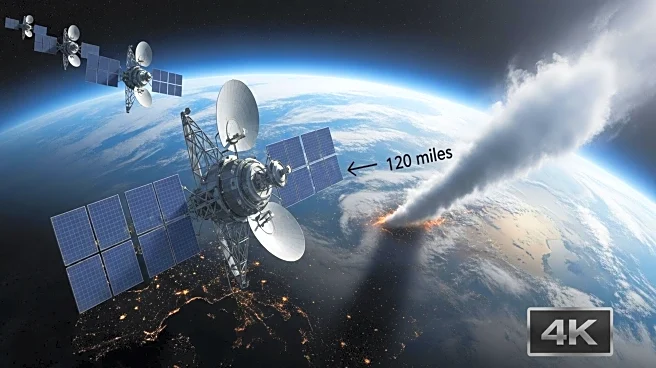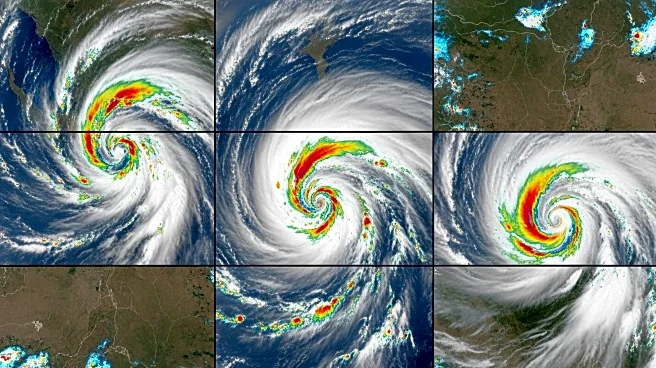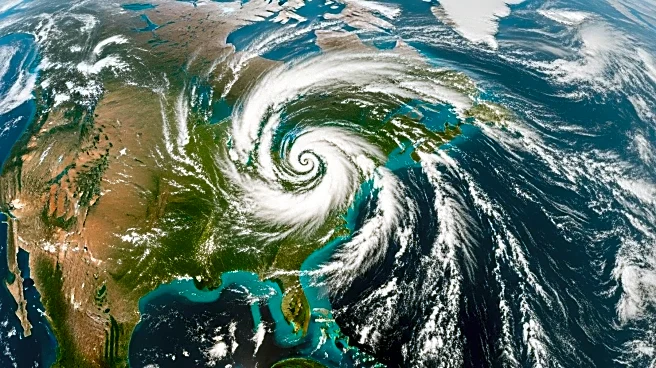What's Happening?
NASA satellites have captured a striking 120-mile scar on the landscape of Alberta, Canada, following a severe hailstorm on August 20, 2025. The storm, which occurred in an area known as 'hailstorm alley,' left a visible mark due to the destruction of vegetation, with grain crops flattened and corn reduced to bare stalks. The storm's intensity was attributed to a combination of elevation and proximity to the Rocky Mountains, which create conditions conducive to severe weather. The Insurance Bureau of Canada noted that the mix of moist air at lower levels and cold, dry currents from the mountains contributes to the frequency of such events. The storm's aftermath was documented by NASA's Terra and Aqua satellites, which used the MODIS instrument to capture the damage. The event is part of a broader trend of increasing extreme weather events linked to climate change.
Why It's Important?
The severe hailstorm in Alberta underscores the growing impact of climate change on weather patterns, with significant implications for agriculture and local economies. The total crop damage reported, including losses of alfalfa, canola, and wheat, highlights the vulnerability of the agricultural sector to extreme weather. Additionally, livestock issues and property damage, such as the destruction of barn roofs and windows, further illustrate the economic toll. As climate change continues to intensify weather events, regions like Alberta may face increased frequency and severity of such storms, posing challenges for farmers and insurers. The event serves as a reminder of the urgent need for climate action to mitigate future risks and protect economic stakeholders.
What's Next?
The financial impact of the recent hailstorm is still being assessed, with insurance claims expected to rise as damage reports continue to come in. The event may prompt discussions among policymakers and industry leaders about enhancing resilience to extreme weather through improved infrastructure and insurance mechanisms. Additionally, the scientific community may use this data to further study the effects of climate change on weather patterns, potentially influencing future climate policy and adaptation strategies. Stakeholders in agriculture and insurance sectors will likely advocate for measures to better prepare for and respond to similar events in the future.
Beyond the Headlines
The Alberta hailstorm highlights the ethical and social dimensions of climate change, particularly its disproportionate impact on rural and agricultural communities. As these areas often lack the resources to quickly recover from such events, there is a growing need for equitable climate adaptation strategies. The storm also raises questions about the long-term sustainability of current agricultural practices in the face of changing climate conditions, potentially prompting shifts towards more resilient crop varieties and farming techniques.













